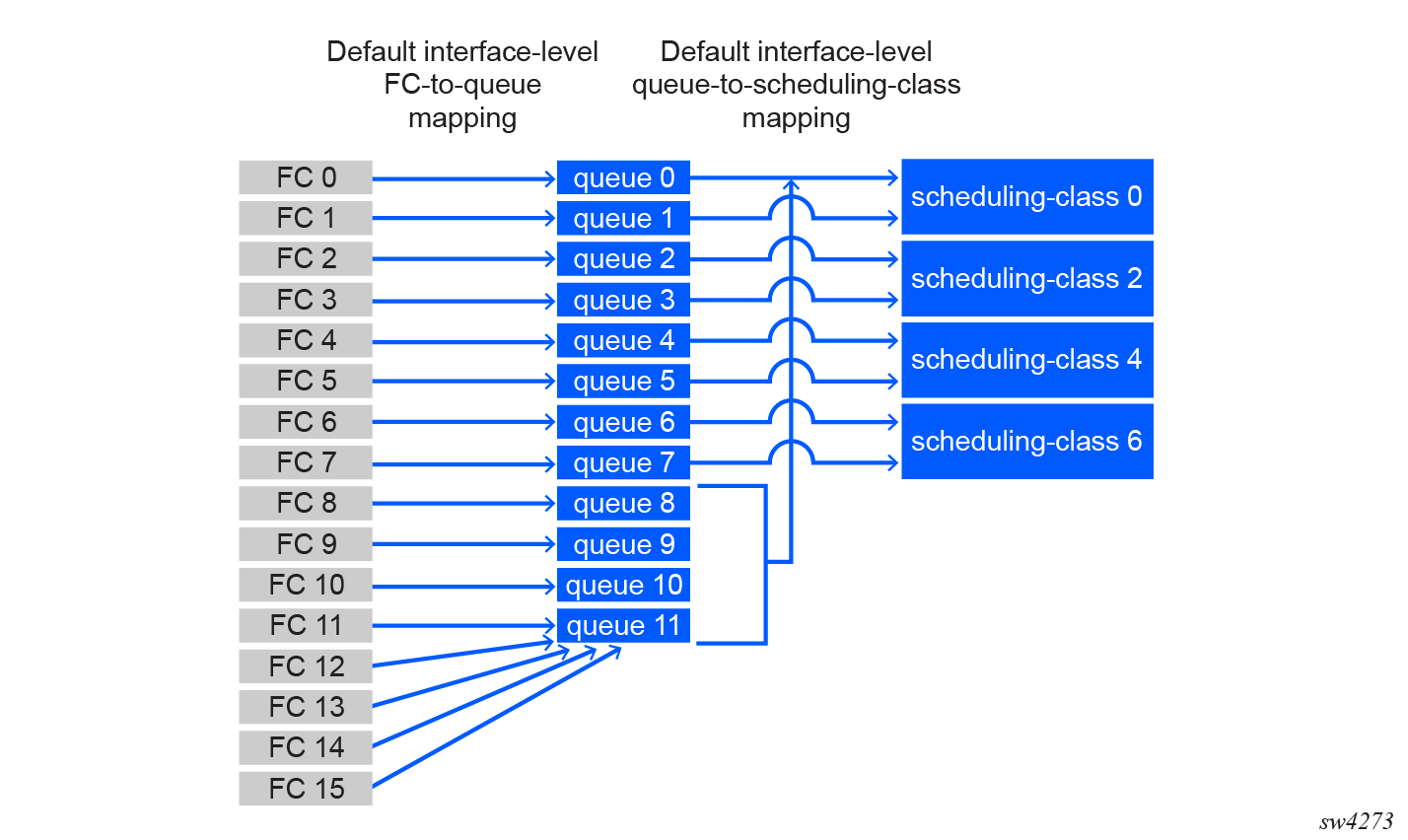Egress queue and scheduling class mapping and scheduling
By default on 7730 SXR platforms, each interface is associated with 12 configurable egress queues. Every interface always has a full set of egress queues; only the names of the queues are variable. By default, these queues also map to a set of scheduling classes, as shown in the following figure.

On an interface, packets are assigned to egress queues based on FC-to-queue mapping. To change the default mapping on interfaces, configure a custom FC-to-queue mapping using the qos forwarding-classes command.
On a subinterface, by default all traffic uses the same interface-level queues as shown in the preceding figure. To associate queues and forwarding classes to a subinterface, configure an output class map using the qos output-class-map command and assign it to the subinterface.
Egress schedulers
To manage the distribution of scheduling resources among queues and scheduling classes, the traffic management unit (TMU) uses egress schedulers. Two configurable egress scheduling policies are supported to manage the queue and scheduling class schedulers:
- Queue scheduling policy (at subinterface [CVLAN] and interface-queue
level)
The queue scheduling policy also defines the queue to scheduling class mapping.
- Scheduling class scheduling policy (at interface level)
The chapters that follow provide more detail about egress queue mapping and egress scheduling.